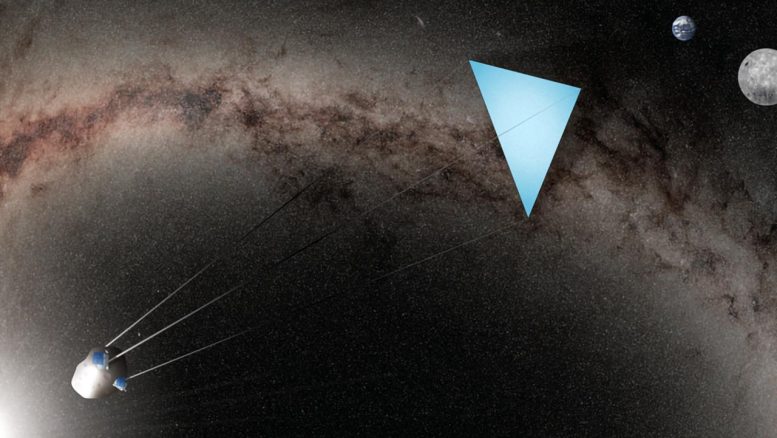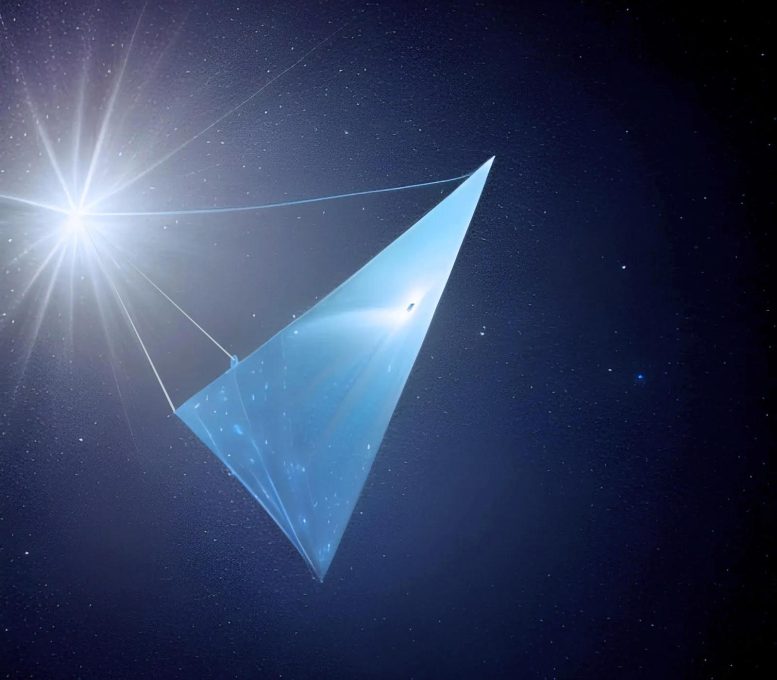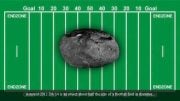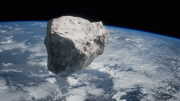
Earth is experiencing rapid warming, and astronomer István Szapudi has proposed a solar shield concept to reduce sunlight hitting Earth, making use of a tethered asteroid as a counterweight. This innovative idea makes the shield’s mass more than 100 times lighter than previous designs, with the only part that needs to be launched from Earth weighing about 35,000 tons. Credit: Brooks Bays/UH Institute for Astronomy
Shading Earth: An Innovative Solar Shield Tethered to an Asteroid to Combat Climate Change
Earth is rapidly warming and scientists are developing various methods to reduce the effects of climate change. István Szapudi, an astronomer at the University of Hawaiʻi Institute for Astronomy, has proposed a unique approach—a solar shield to reduce the amount of sunlight hitting Earth, combined with a tethered, captured asteroid as a counterweight. Engineering studies using this approach could start now to create a workable design that could mitigate climate change within decades.
The paper, “Solar radiation management with a tethered sun shield,” was recently published in the journal Proceedings of the National Academy of Sciences.
Solar Shield Concept
One of the most straightforward approaches to reducing the global temperature is to shade the Earth from a fraction of the Sun’s light. This idea, called a solar shield, has been proposed before, but the large amount of weight needed to make a shield massive enough to balance gravitational forces and prevent solar radiation pressure from blowing it away makes even the lightest materials prohibitively expensive.
Szapudi’s creative solution consists of two innovations: a tethered counterweight instead of just a massive shield, resulting in making the total mass more than 100 times less, and the use of a captured asteroid as the counterweight to avoid launching most of the mass from Earth.

Artist’s rendition of the proposed solar shield tethered to an asteroid as a counterweight. Credit: Brooks Bays/UH Institute for Astronomy
“In Hawaiʻi, many use an umbrella to block the sunlight as they walk about during the day. I was thinking, could we do the same for Earth and thereby mitigate the impending catastrophe of climate change?” Szapudi said.
Incorporating a Tethered Counterbalance
Szapudi began with the goal of reducing solar radiation by 1.7%, an estimate of the amount needed to prevent a catastrophic rise in global temperatures. He found that placing a tethered counterbalance toward the Sun could reduce the weight of the shield and counterweight to approximately 3.5 million tons, about one hundred times lighter than previous estimates for an untethered shield.
While this number is still far beyond current launch capabilities, only 1% of the weight—about 35,000 tons—would be the shield itself, and that is the only part that needs to be launched from Earth. With newer, lighter materials, the mass of the shield can be reduced even further. The remaining 99% of the total mass would be asteroids or lunar dust used as a counterweight. Such a tethered structure would be faster and cheaper to build and deploy than other shield designs.
Today’s largest rockets can only lift about 50 tons to low Earth orbit, so this approach to solar radiation management would be challenging. Szapudi’s approach brings the idea into the realm of possibility, even with today’s technology, whereas prior concepts were completely unachievable. Also, developing a lightweight but strong graphene tether connecting the shield with the counterweight is crucial.
Reference: “Solar radiation management with a tethered sun shield” by István Szapudi, 31 July 2023, Proceedings of the National Academy of Sciences.
DOI: 10.1073/pnas.2307434120









It’s been proposed before. The article didn’t even mention the lagrange point. It’s a fun thought experiment, but you can’t actually do it.
Geoengineering an occupied planet in a way that not everyone agrees with will not go well. Climates have always changed, and there will be winners as well as losers. Any group that intentionally controls the climate of the world will be responsible for it, liable for it. Skylab was a satellite that fell to Earth, and for months, people were certain it was going to hit them personally. Controlling the weather was something witches did, and people reacted poorly. When the weather isn’t ideal, people will have someone to blame for their failed harvest or flooded home, and regardless of causation, they will be furious. Any group that controls the world’s weather will control the world, and for their own benefit, against the interests of whomever you want to protect — watch an Austin Powers film, or Get Smart Again, please.
Not to mention, the danger if the shield suddenly fails. Or, if the solar wind and this solar sail push this hypothetical asteroid in a new orbit into the planet.
I would not put my name on this research, my family’s name. I would not want my grandchildren’s name attached to this thing that could very well end up being called the Szapudi Shield, and thankfully not the Bothred Umbrella.
Lono get hot 🔥 🥵 in here indeed, 1000 snowboard waste or travel far, perhaps cross fingers for rain and snow ❄️, rain dance says it takes more one Z=1 to convert to Z=2, e=mxc², TE = maximum time of eclipse (approx. ~72 min’ max. 90/yr., 0° inclination) is equal 2xsin-¹ Re (6378 km)/orbital altitude (km) GEO 35, 000 km + Re/360°x earth’s radius viewed from space (a.k.a. deg. or ‘) Greenland or Antarctica areas as well as local Mountains ⛰️, well the peaks so snowboarding 🏂 year round lol ideally.
Seems to me that if you covered a small fillet at each corner of his trianguler shade, with solar cells, they could power an Ion thruster attached at those corners with sufficient power to counter the solar radiation pressure acting on it.
Further, they could be used to impart a small rotation around the triangles centre that would both stabilise the orbit apply tension to the shield material avoiding the need for any rigid boundary structure.
It’d probably need chemical rockets to get to its destination; but Solar driven Ion thrusters should be potentially long lived and provide enough power to sustain is orbit.
And it avoids the need to capture and reposition a 315,000 tonne asteroid; and saves manufaturing and launching the graphene tethers.
More practical I think to perfect the mass-manufacture of durable nanocrystalline barium-sulfate sheets, and deploy as many thousands of square miles of the stuff as we can in barren regions in the equatorial zone. (If you don’t know what nanocrystalline Ba[SO4]3 can do, you haven’t been paying attention.)